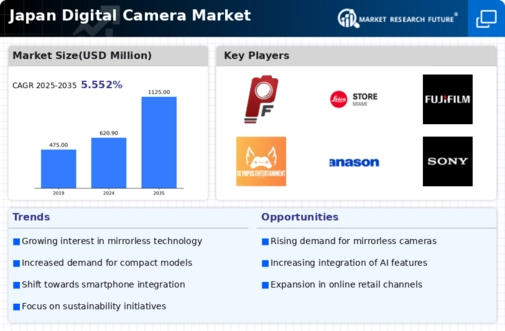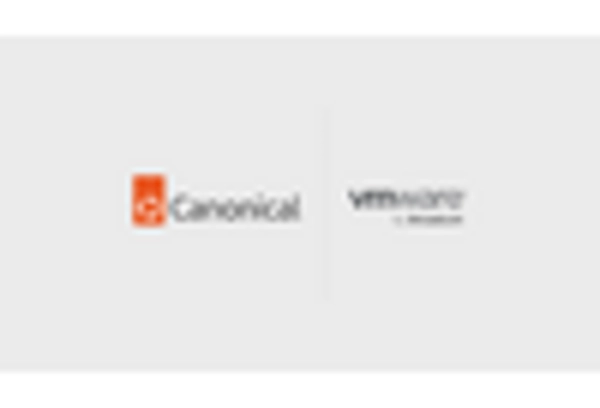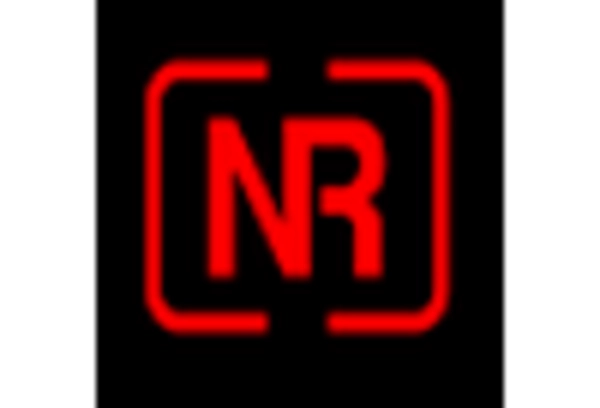Shift Towards Hybrid Models
The digital camera market in Japan is witnessing a notable shift towards hybrid models that combine features of both compact and DSLR cameras. This trend is largely driven by consumer preferences for versatility and functionality. Hybrid cameras, which offer interchangeable lenses and advanced features, are becoming increasingly popular among both casual users and professionals. In 2025, hybrid models are projected to account for over 30% of total camera sales, reflecting a significant change in consumer behavior. This shift is prompting manufacturers to innovate and enhance their hybrid offerings, thereby influencing the competitive dynamics within the digital camera market.
Technological Advancements in Imaging
The digital camera market in Japan is experiencing a surge due to rapid advancements in imaging technologies. Innovations such as high-resolution sensors, improved autofocus systems, and enhanced image stabilization are attracting both amateur and professional photographers. The introduction of 8K video recording capabilities and advanced low-light performance is particularly appealing. In 2025, the market is projected to grow by approximately 5.2%, driven by these technological enhancements. As consumers increasingly seek superior image quality and versatility, manufacturers are compelled to invest in research and development, thereby fostering a competitive landscape within the digital camera market.
Growing Popularity of Content Creation
The digital camera market in Japan is significantly influenced by the rising trend of content creation, particularly among younger demographics. With the proliferation of social media platforms, individuals are increasingly seeking high-quality cameras to produce engaging content. This trend is reflected in the sales data, which indicates a 7% increase in compact camera sales in 2025, as users prioritize portability and ease of use. The demand for cameras that cater to vloggers and influencers is reshaping product offerings, prompting manufacturers to develop models specifically designed for content creators. This shift is likely to continue driving growth in the digital camera market.
Sustainability and Eco-Friendly Practices
The digital camera market in Japan is increasingly influenced by sustainability and eco-friendly practices. Consumers are becoming more conscious of the environmental impact of their purchases, leading to a demand for products that are produced sustainably. Manufacturers are responding by adopting eco-friendly materials and processes, which is likely to resonate with environmentally aware consumers. In 2025, it is estimated that eco-friendly camera models will represent approximately 15% of the market share. This trend not only reflects changing consumer values but also encourages innovation in sustainable practices within the digital camera market.
Increased Consumer Interest in Photography
The digital camera market in Japan is benefiting from renewed consumer interest in photography as a hobby. This trend appears to be fueled by the accessibility of photography education through online platforms and workshops. As more individuals engage in photography, the demand for entry-level and mid-range cameras is expected to rise. In 2025, the market is anticipated to expand by 4.5%, as new enthusiasts seek quality equipment to enhance their skills. This growing interest not only supports sales but also encourages manufacturers to diversify their product lines, catering to a broader audience within the digital camera market.
















Leave a Comment